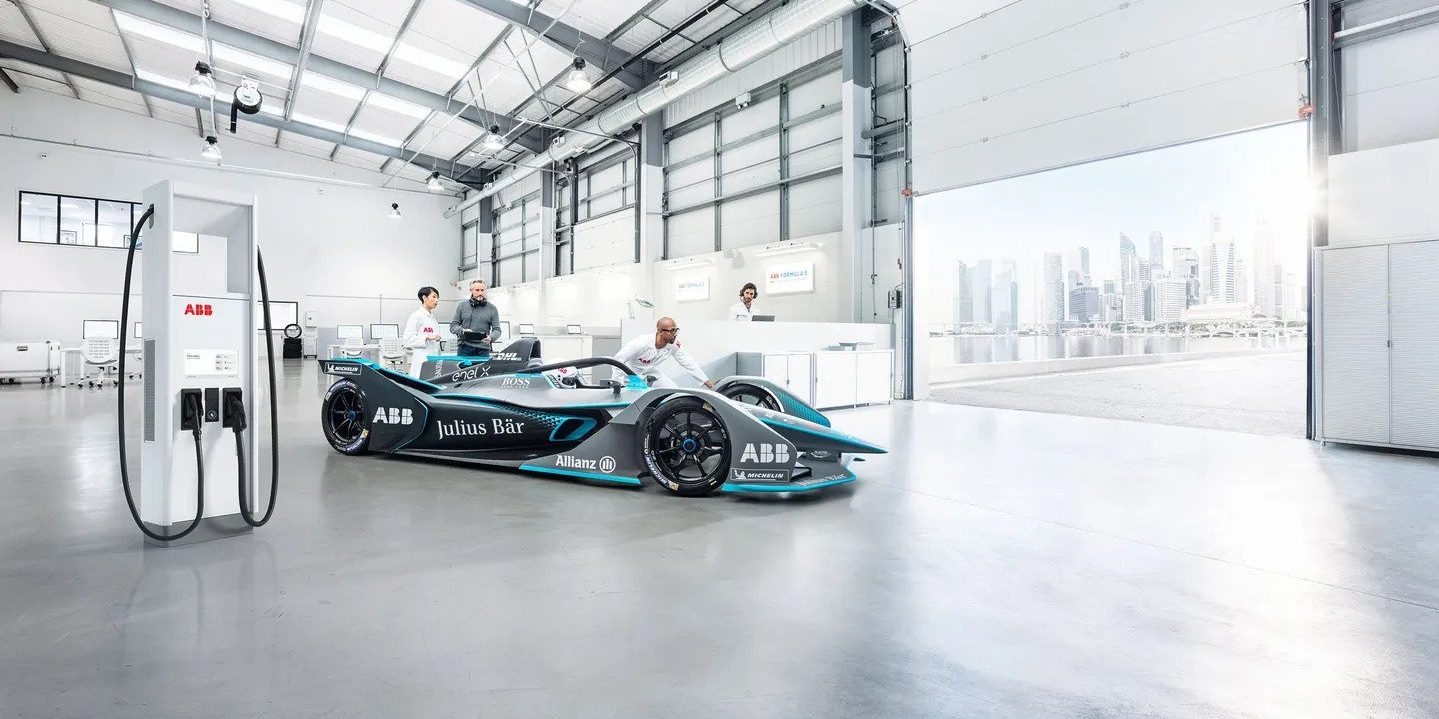Formula E again delays debut of 600kW mid-race charging


Formula E had been planning to debut its new “Attack Charge” mid-race charging system at this weekend’s race in Misano, Italy, but the system has again been delayed until some race in the future.
For a couple years now, Formula E has been planning to introduce a mid-race charging stop into its races as a way to demonstrate fast-charging technology.
We’ve come a long way since the first Formula E season, when originally drivers would stop in the middle of the race to swap from one car to another with a fully-charged battery. Formula E had gone with this system because it would be too difficult to set up mid-race charging or battery swapping, so they just swapped the driver from one car to the other instead.
That car-swapping system was dropped with the Gen2 cars in 2018, and the faster, lighter Gen3 car which went into service last season promised mid-race fast-charging capability.
But mid-race charging got pushed back last season due to problems with building the equipment required for such high charging speeds. At first it was going to start at the beginning of the season, then mid-season, then end of the season, then pushed back another season altogether.
At the beginning of this season, Formula E had planned to introduce Attack Charge mid-season in Misano, Italy, the beginning of the “European leg” of the season. But issues have surfaced both in pre-season and mid-season testing.
So now, Formula E is pushing back implementation of Attack Charge indefinitely as it continues to test and ensure that the system works without flaws.
Until then, races will continue with the current “attack mode,” system, wherein drivers get a few minutes of boosted power throughout the race to help shake up the pack. With “attack charge,” that mode was going to be replaced with a required pit stop in order to unlock access to that additional power burst – with the pit stop adding around 4kWh, or ~10% of pack capacity, in just 30 seconds.
Formula E sees potential road applications here, too, as 600kW is faster than current consumer vehicles can charge at. If its testing of this system can help improve charge speeds or reliability, or perhaps make it easier to install fast charging systems quickly (since Formula E’s systems are necessarily temporary, being installed for a race weekend at a time), this could be a boon for EV drivers everywhere.
But first, it wants to make sure that the system is reliable enough to be used in racing – where conditions can be hard and where failures can lead to unfair competition if they strike at the wrong time.
The next races of Formula E’s tenth season are a doubleheader this weekend in Misano, Italy, with races on both Saturday and Sunday, April 13-14, at 1PM UTC, 6AM PDT, 9AM EDT, or 3PM local Italy time. In the US, all sessions will be streamed live on Roku. To find out how to watch in other regions, check out Formula E’s “Ways to Watch” page.
FTC: We use income earning auto affiliate links. More.